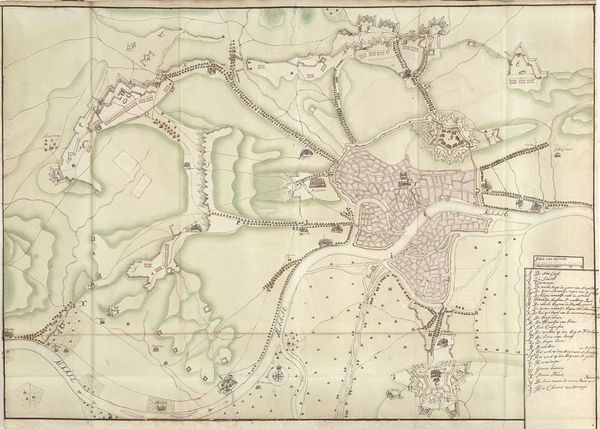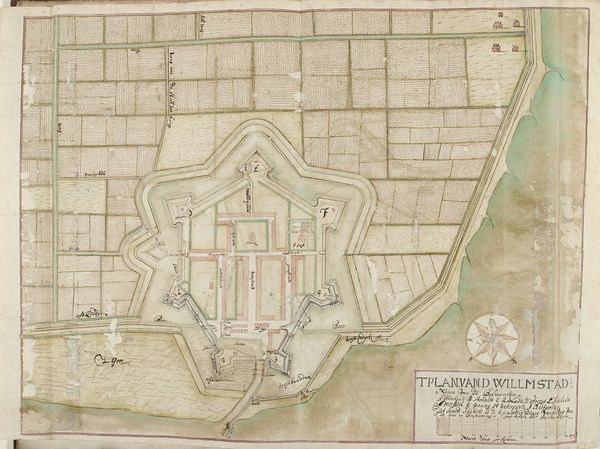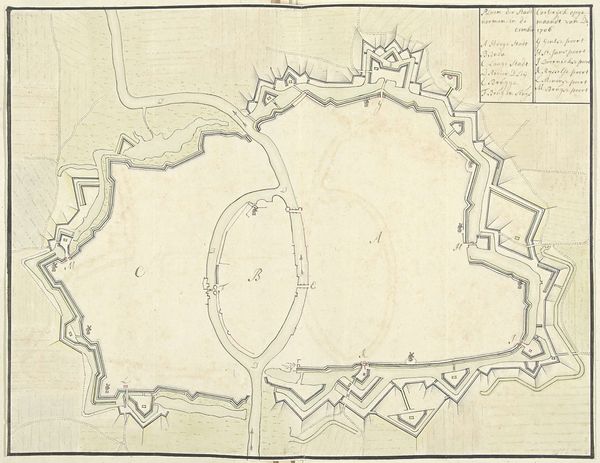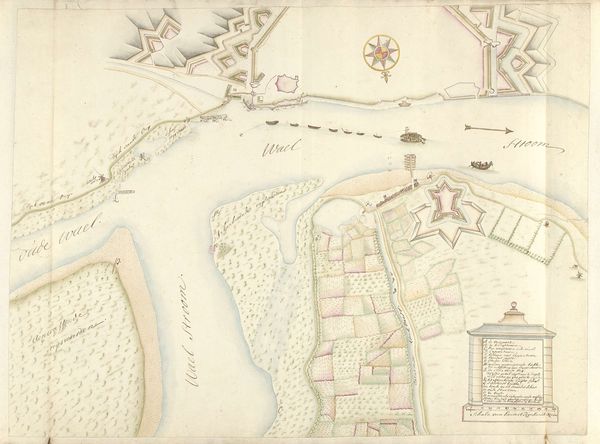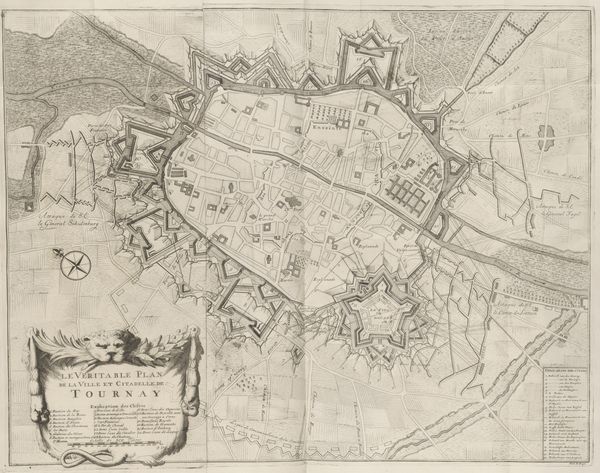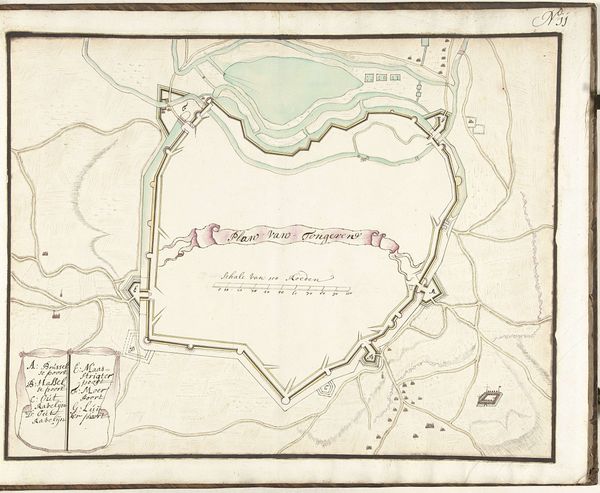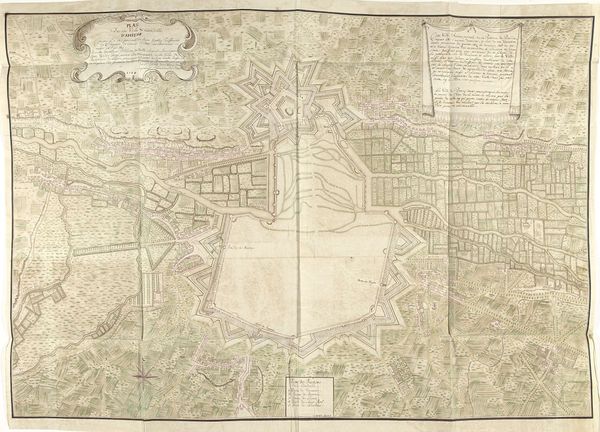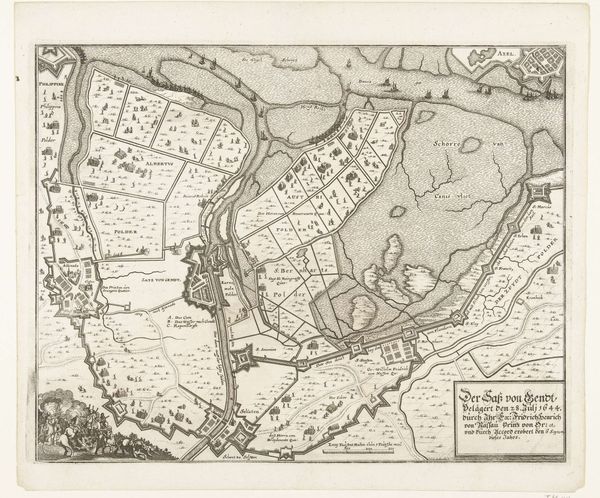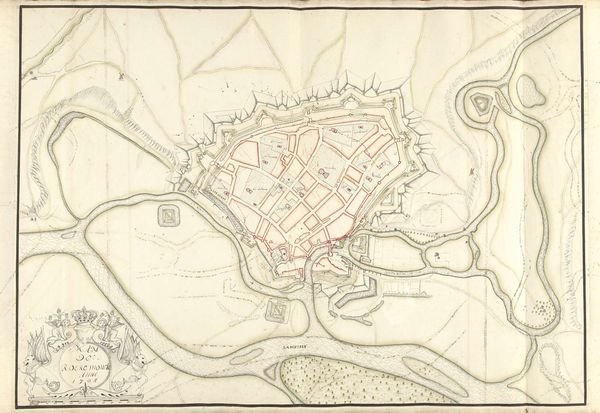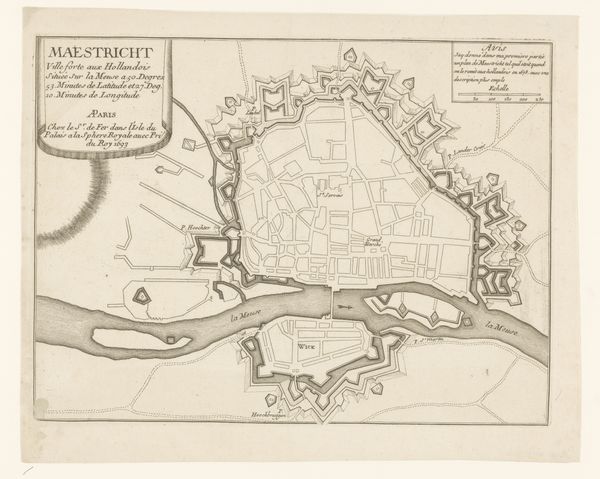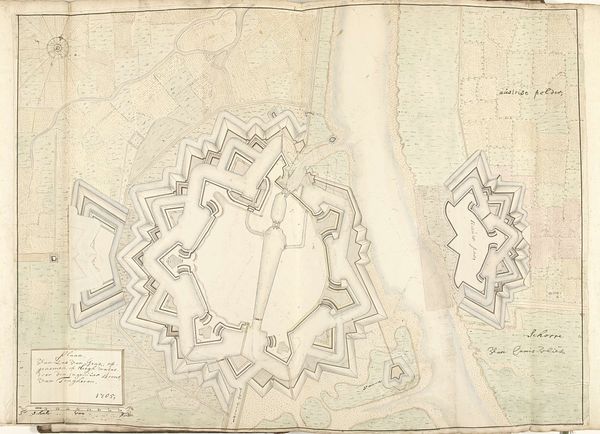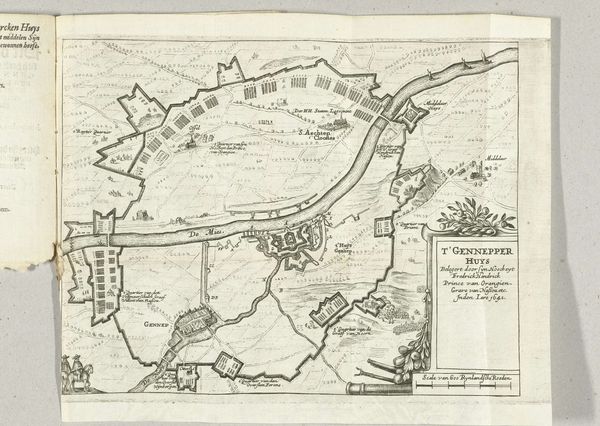
drawing, watercolor
#
drawing
#
landscape
#
watercolor
#
coloured pencil
#
academic-art
Dimensions: overall: 50.9 x 38.7 cm (20 1/16 x 15 1/4 in.)
Copyright: National Gallery of Art: CC0 1.0
Editor: We're looking at P. Stuyvesant Estate ("Petersfield"), a drawing made around 1936 using watercolor and colored pencil. It depicts a very organized, almost formal landscape. The patterns created by the gardens are quite striking. What jumps out at you when you see this work? Curator: The map-like quality immediately brings to mind ideas of ownership and control. Even the idealized image of the house nestled within an elaborate cartouche screams about dominance. Do you see how the composition places the formal gardens at the bottom, almost as if they are the foundation upon which the rest of the estate is built? Editor: Yes, it’s like the gardens are the visible representation of power. It makes me wonder, what did gardens and estates signify back then that made it so important to record it in such detail? Curator: Gardens have always been symbols, often of paradise, or human's ability to tame nature. Here, it's about claiming space and shaping it to reflect a certain vision. Consider the rows of trees - nature organized. Even the watery areas seem confined, directed. Think about what it means to impose that kind of order on a landscape. Whose vision are we seeing, and who benefits from it? Editor: So, beyond just showing the land, it’s communicating specific ideas and a social order. Curator: Exactly. These images reinforced that order through symbolism understood by the community, where control and permanence was literally on the map. Does it alter how you view this artwork now? Editor: Absolutely, it transforms the artwork from just an image of land to a historical narrative and a record of a certain type of power. Thanks for bringing that to my attention. Curator: It’s fascinating to decode how these early landscapes mirror social structures, and to note its relevance today.
Comments
No comments
Be the first to comment and join the conversation on the ultimate creative platform.
